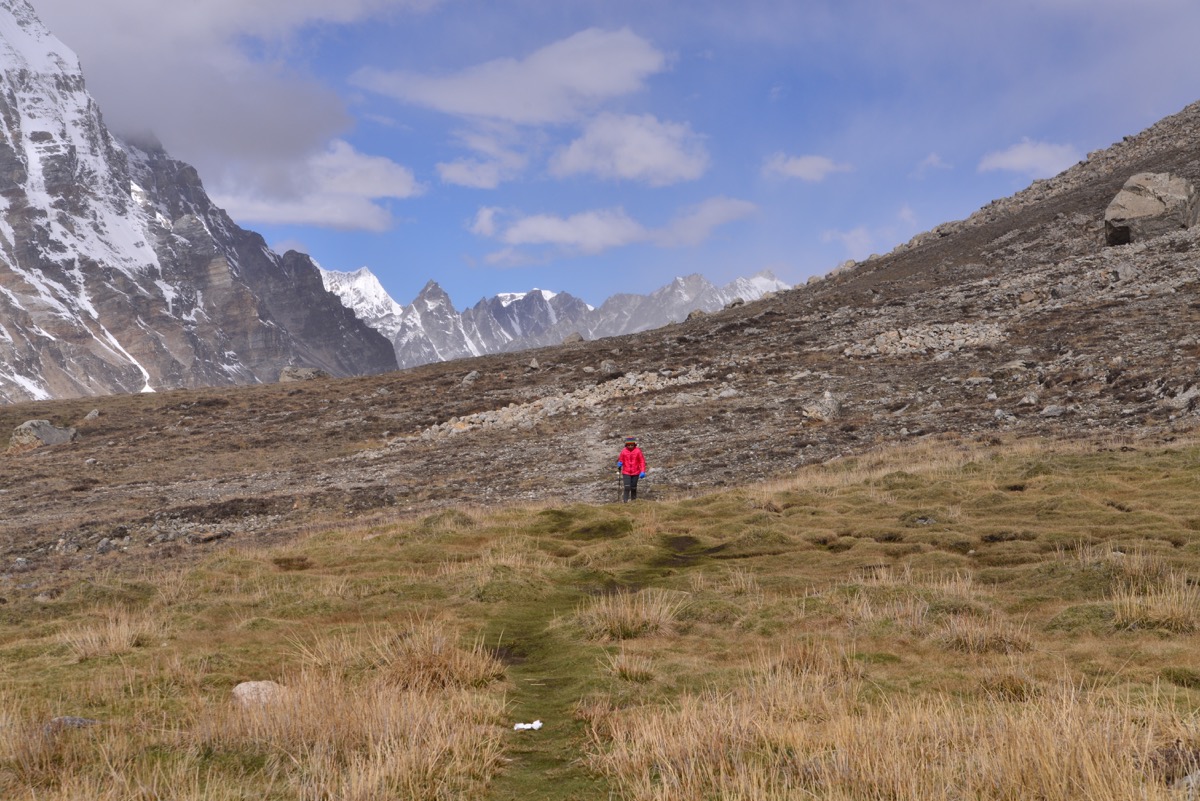The basics
Don’t you get annoyed when people say “you should have seen it here 20 years ago … it was so much better”? Well if you trek in the Kanchenjunga region we can safely say it is like stepping back 20 years or more to a time when trekking in the Nepal Himalayas was more adventure and less ‘apple pie’.
Kanchenjunga lies in the far east of Nepal, near the border with Sikkim, India. Depending on the route you take you can spend 14 to 20 days here. It is possible to visit the north or south Base Camp or combine them both into one longer 20 day trek. At its highest point Kanchenjunga circuit reaches 5200 m at Pang Pema, the local name for Kanchenjunga north base camp.
Closed to trekkers until the mid 1980’s this area is protected by the Kanchenjunga conservation area and a special permit is also required because it is still considered a restricted area. This means two things it is less trekked than some of the other routes in Nepal, and the flora and fauna remains as it always was stunning.
As for the mountains, in addition to the main peak of Kanchenjunga, there are four subsidiary summits exceeding 8000 m, the most important being Kanchenjunga West, also known as Yalung Kang (8505 m). Of course there are others. These include 20 peaks over 7000 m such as Kambachen (7903 m), Janu (7710 m), Jongsong (7483 m), Kabru (7353 m), Tent Peak (7365 m) and the Twins (7350 m).
Having said this is a remote area with few trekkers, the new Great Himalayan Trail has opened up across the whole length of Nepal. This means tourism is being promoted in these more remote area and more teahouses are opening up. Great for the local’s who can have another source of income. But it mean, perhaps you should get along soon to Kanchenjunga so you can be the one saying “you should have seen it 20 years ago…”.
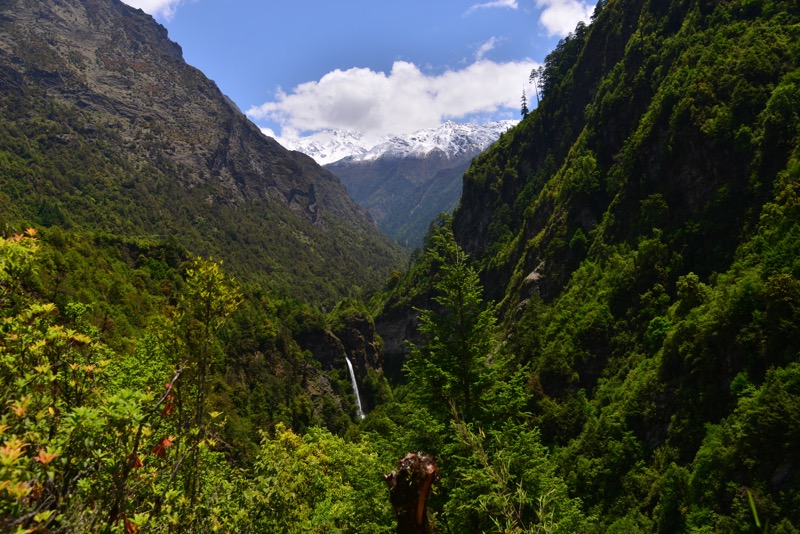
Where exactly is the Kanchenjunga circuit?
Short answer, it is located in the Kanchenjunga Conservation Area in eastern Nepal. See map info below!
Map of Kanchenjunga circuit
This is a copy of a map produced by the Himalayan Map House covering the Kanchenjunga section of Great Himalaya Trail High Route at the scale of 1:100,000.
The map is for online use only to help you plan your route. It certainly helped me a lot on my recent trip around the Kanchenjunga circuit. But please note you cannot download this map as it shouldn’t be reproduced in any way. I do recommend you buy a printed copy of a map for use during the trek itself.
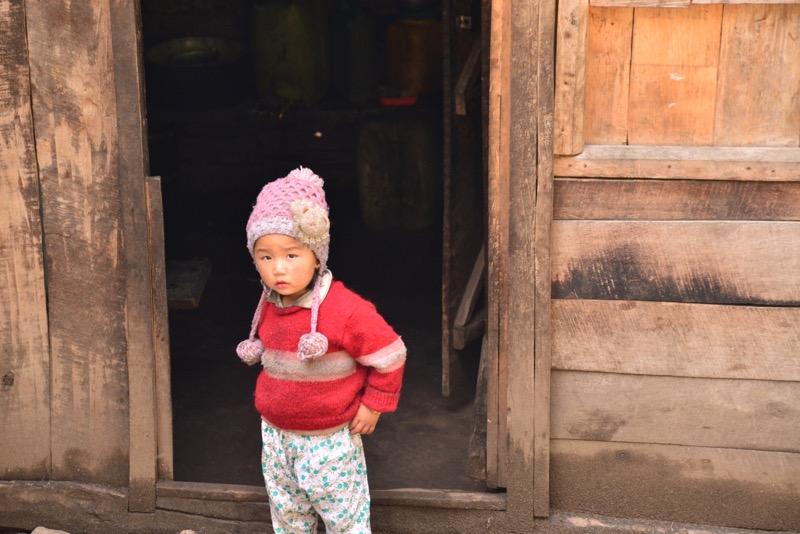
Facts about the Kanchenjunga circuit
Highest point of Kanchenjunga circuit?
At 5200 m Panga Pema (North base camp) marks the highest point of the circuit. But you do not sleep here. Rather you stay at Lhonak and make a day trip to Pang Pema.
Highest sleeping point on the Kanchenjunga circuit?
At 4800 m Lhonak offers accommodation near the North Base Camp of Kanchenjunga. If the teahouse in Pang Pema is open, and you can ask at the teahouse Kambachen if it is, and if there is room, you could stay at 5200 m there at Pang Pema.
What mountains can you see on the Kanchenjunga circuit?
Obviously Kanchenjunga! But others include Jannu (also known as Kumvakarna), Wedge Peak, Rathong Peak, Mehra Peak, plus more.
Highlights of the Kanchenjunga Circuit
- It is a remote and wild area with few other trekkers on the trail.
- There are multiple itineraries you can follow.
- The views of Kanchenjunga Massif are awe-inspiring.
- There are high passes to cross.
- There are two Base Camps to visit.
- Plus many more …
Best time of year to go trekking in Kanchenjunga?
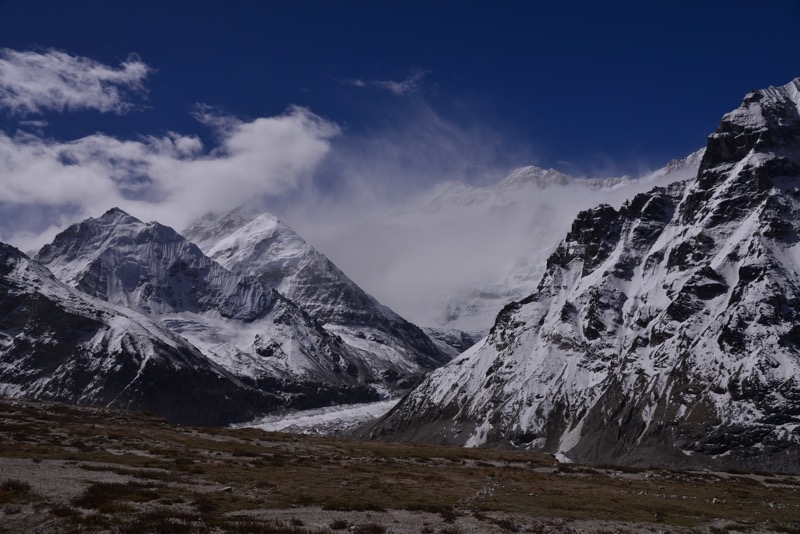
Oddly, Nepal has 6 seasons in one year! But on the whole, we can break them down into four winter, spring, monsoon, and autumn.
The best time to trek in this area is October and November. Followed closely by April and May. I did this trek in May.
I do not recommend doing this trek in the winter or the monsoon for the following reasons:
- Between December and mid March heavy snow can block the Sele Le Pass.
- Also, teahouses above Ghunsa (in Kambachen and Lhonak) and in Sele Le Pass Camp, Cheram, Ramche, and Torongding can be closed in the winter.
- In the monsoon (summer) trails are slippery and some exposed sections are prone to landslides and rockfalls.
Note: Check with your operator for recommendations on when to trek Kanchenjunga
Required permits
You will need two permits for Kanchenjunga. Your operator will obtain these for you.
1. Kanchenjunga Conservation Area Project Entry Permit
- Kanchenjunga Conservation Area Permit can be obtained in Ghunsa.
- This will cost USD 25 per person.
- No photographs are required.
- No prior application is required.
2. Kanchenjunga Restricted Area Entry Permit
- This should be obtained in Kathmandu before setting off on your trek. This means prior application is required, done by your operator. No photographs are required. Please note the issuing office is closed on Saturdays and public holidays to please take this into account when making your plans.
- The permit will cost USD 20 per person per week.
- For Kanchenjunga North Base Camp you will need one week.
- For Kanchenjunga Circuit you will need two weeks.
- For Kanchenjunga South Base Camp you will need one week.
Note: Your original passport is required to obtain the permits. But should you need your passport at that time, the permits can be obtained with a copy of your passport’s main page and copy of your flight tickets.
What to pack?
Only pack what you absolutely need!
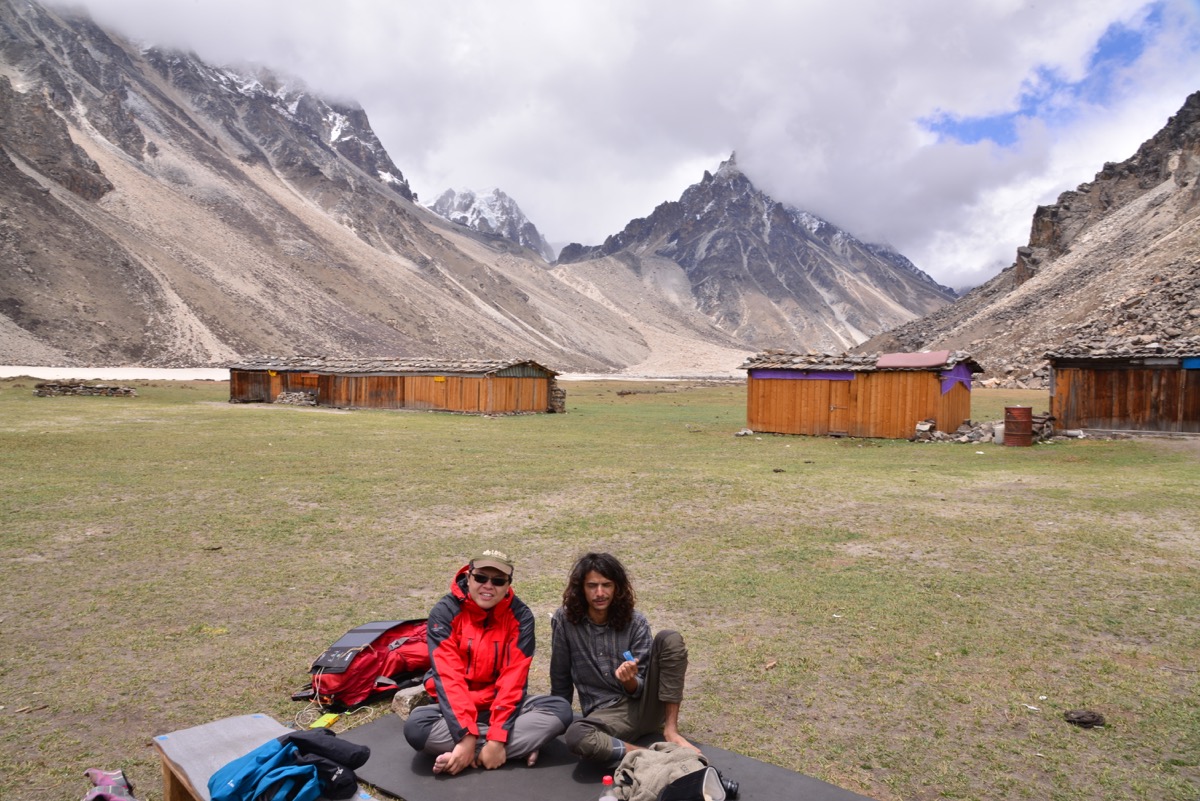
I have seen people packing too much and too little. And remember, having a porter doesn’t mean you can bring everything! He needs to be able to walk for the same number of days too. Pack wisely and thoughtfully. You can leave your unnecessary belongings in Kathmandu in your hotel or operators office.
How difficult is the Kanchenjunga circuit trek?
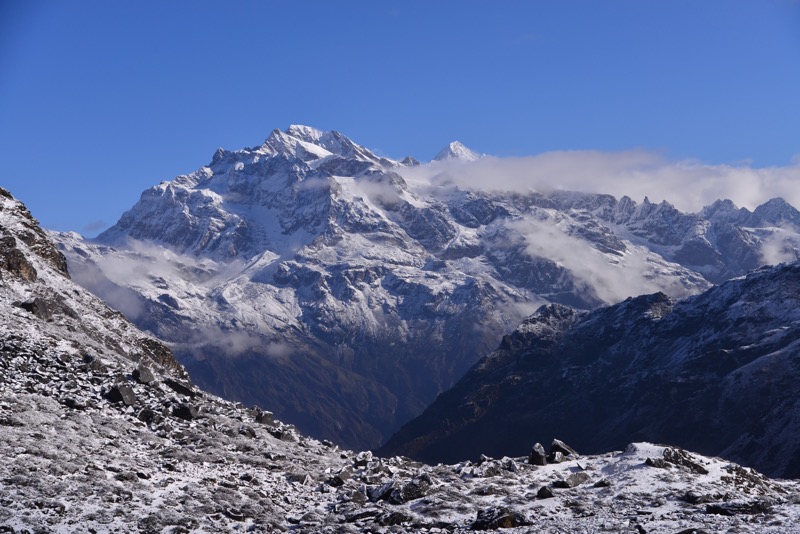
At 5200 m, on this trek that is at Pang Pema, there is only 50% oxygen. Our normal effective oxygen is at 11%. So at 5200 m we can say this is a “Very High” altitude category. Every step will feel like running a marathon.
Basically then, you need to be fit (but not super fit) to do the Kanchenjunga circuit trek.
Since many people ask me about this, I have written a separate post on this topic. Check it here.
Kanchenjunga circuit route and itineraries
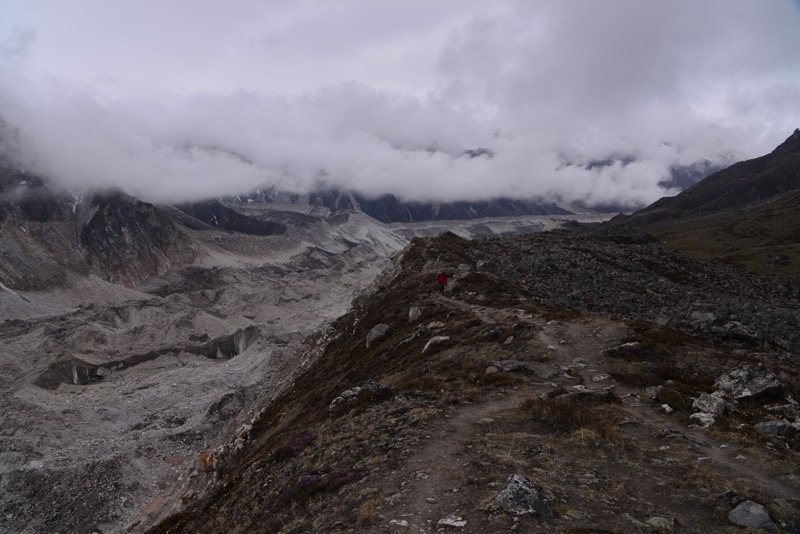
You have basically three routes to choose from. I did the circuit, which is the longest and hardest amongst the three. I recommend this route among the three options.
You can check the detailed day by day itinerary on my separate post. First, take a look at the outline itinerary for these 3 options below:
Kanchenjunga Circuit Trek
Highly recommended this is the longest and hardest of the 3 options. It takes 20 days from Kathmandu to Kathmandu. It is also highly recommended you do this in a clockwise direction (for altitude acclimatization reasons).
| Day 1 | Kathmandu to Bhadrapur Flight & Drive to Ilam |
| Day 2 | Ilam to Taplejung & Taplejung to Tapethok Drive |
| Day 3 | Tapethok to Sekathum |
| Day 4 | Sekathum to Amjilosa |
| Day 5 | Amjilosa to Gyabla |
| Day 6 | Gyabla to Ghunsa |
| Day 7 | Acclimatization Day |
| Day 8 | Ghunsa to Kambachen |
| Day 9 | Acclimatization Day |
| Day 10 | Kambachen to Lhonak |
| Day 11 | Day Trip to Pang Pema |
| Day 12 | Lhonak to Ghunsa |
| Day 13 | Ghunsa to Sele Le Pass Camp |
| Day 14 | Sele Le Pass Camp to Cheram |
| Day 15 | Day Trip to Kanchenjunga South Base Camp |
| Day 16 | Cheram to Torongding |
| Day 17 | Torongding to Yamphuding |
| Day 18 | Yamphuding to Khamdime |
| Day 19 | Khamdime to Bhadrapur Drive |
| Day 20 | Bhadrapur to Kathmandu Flight |
Kanchenjunga North Base Camp Trek
This is the second longest amongst the 3 options at 17 days Kathmandu to Kathmandu. This route takes you exclusively to the North Base Camp, skipping Sele Le Pass and the South Base Camp.
| Day 1 | Kathmandu to Bhadrapur Flight & Drive to Ilam |
| Day 2 | Ilam to Taplejung & Taplejung to Tapethok Drive |
| Day 3 | Tapethok to Sekathum |
| Day 4 | Sekathum to Amjilosa |
| Day 5 | Amjilosa to Gyabla |
| Day 6 | Gyabla to Ghunsa |
| Day 7 | Acclimatization Day |
| Day 8 | Ghunsa to Kambachen |
| Day 9 | Acclimatization Day |
| Day 10 | Kambachen to Lhonak |
| Day 11 | Day Trip to Pang Pema |
| Day 12 | Lhonak to Ghunsa |
| Day 13 | Ghunsa to Amjilosa |
| Day 14 | Amjilosa to Tapethok |
| Day 15 | Tapethok to Taplejung & Taplejung to Ilam Drive |
| Day 16 | Ilam to Bhadrapur Drive |
| Day 17 | Bhadrapur to Kathmandu Flight |
Kanchenjunga South Base Camp Trek
This is the shortest amongst the 3 options, taking 14 days Kathmandu to Kathmandu. It will take you exclusively to the South Base Camp, while skipping Sele Le Pass and the North Base Camp.
| Day 1 | Kathmandu to Bhadrapur Flight & Drive to Ilam |
| Day 2 | Ilam to Khamdime Drive |
| Day 3 | Khamdime to Khebang |
| Day 4 | Khebang to Yamphuding |
| Day 5 | Acclimatization Day |
| Day 6 | Yamphuding to Torongding |
| Day 7 | Torongding to Cheram |
| Day 8 | Day Trip to Kanchenjunga South Base Camp |
| Day 9 | Cheram to Torongding |
| Day 10 | Torongding to Yamphuding |
| Day 11 | Yamphuding to Khamdime |
| Day 12 | Khamdime to Ilam Drive |
| Day 13 | Ilam to Bhadrapur Drive |
| Day 14 | Bhadrapur to Kathmandu |
Getting there and back
From Kathmandu you take a one hour flight to Bhadrapur and then a 4 to 5 hour drive to Ilam. Depending on the route you plan to take, you can get a bus or a jeep to and onwards from Ilam. On the return journey you can drive directly to Bhadrapur from the ending point of the trek, depending on the route you chose.
There is a weekly flight scheduled between Kathmandu and Suketar (Taplejung). And while this looks great on paper I do not recommend you try this. This is because many flights to Suketar are cancelled due to weather conditions.
What should you expect from Kanchenjunga
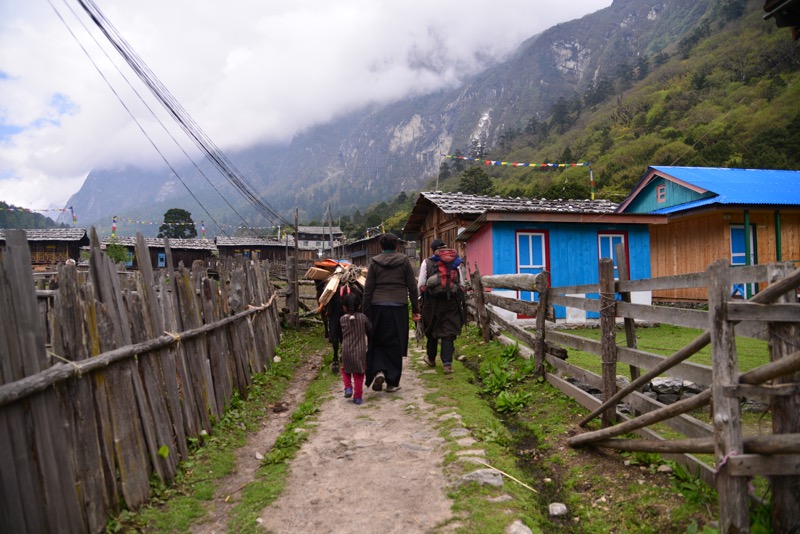
First off, you should expect lush green jungle, pristine landscapes, rocky trails, snow covered mountains and crisp fresh air! But you can also get wet and slippery trails with snow and being exposed to the elements and subject to landslides and rockfalls.
As previously mentioned, be prepared for all 4 seasons in one trek, regardless as to the time of year!
In addition, expect to be mentally and physically challenged. The best way to prepare for this is to be physically fit. And keep your expectations low in terms of food and accommodation! If you do this, the Kanchenjunga Circuit will not disappoint you!
What’s accommodation and food like?
In a word: basic.
In the lower parts of the trail the tea houses are a bit better, with power outlets and a common dining area with a fire. But there will be common bathrooms and squat toilets, and limited phone signals.
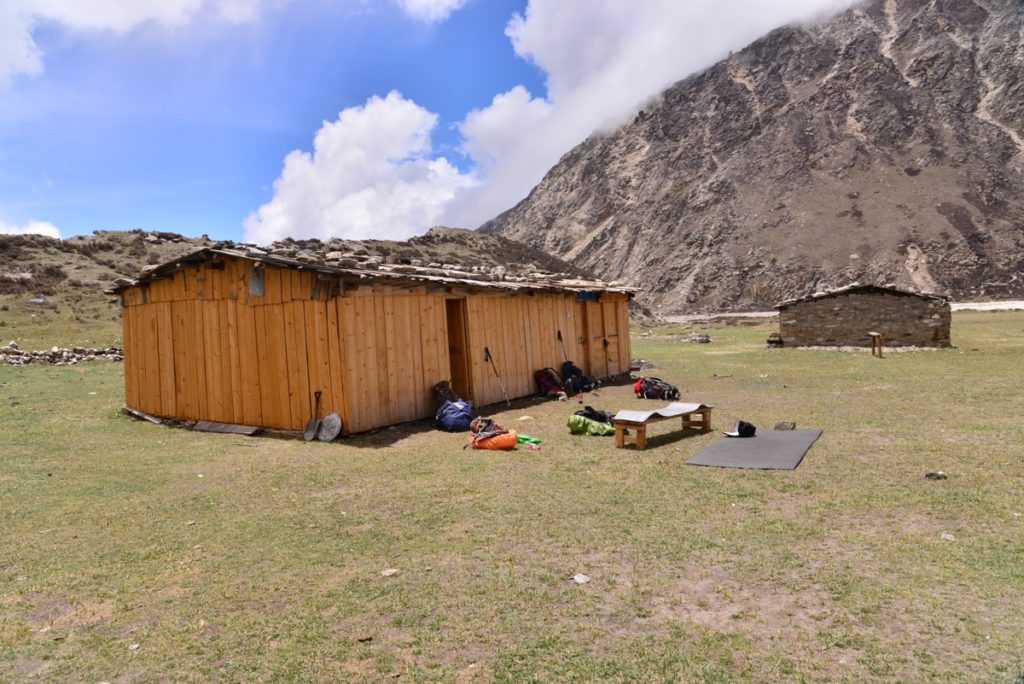
But once you are above Ghunsa and in between Sele Le Pass Camp and Yamphuding all facilities disappear! The toilets will be outside, under the sky! You will eat in the small smoky kitchen with the host family.
Only a few places will have a food menu. The options will become more limited the higher you go on the trail. Food will be organic though, most of it locally grown. Dal Bhat will be available for sure, in unlimited refills for both lunch and dinner.
Don’t forget to pack your favourite snacks!
Be sure to stay hydrated. But remember to save the environment by using purification drops or tablets for drinking water. Most likely bottled water will be in limited supply or not available. And if you ask at the teahouse they will have to use precious resources to boil the water for you to drink.
Conclusion
Although Kanchenjunga is developing as a teahouse trek, many western operators are promoting this as a camping trek. While it’s up to you if you want to go with a western operator, I suggest you take advantage of this time before the “you should have seen it 20 years ago” sets in and do this as a teahouse trek.
And of course, going with a local operator gives more back to the local economy. A western operator may provide you with a more comfortable experience but the profits will be going back to their home country and the supplied will be bought in Kathmandu, not in the mountains.
Who goes trekking for the comfort anyway? Save that for your post trek time you will appreciate that comfortable bed back in Kathmandu even more for it!
